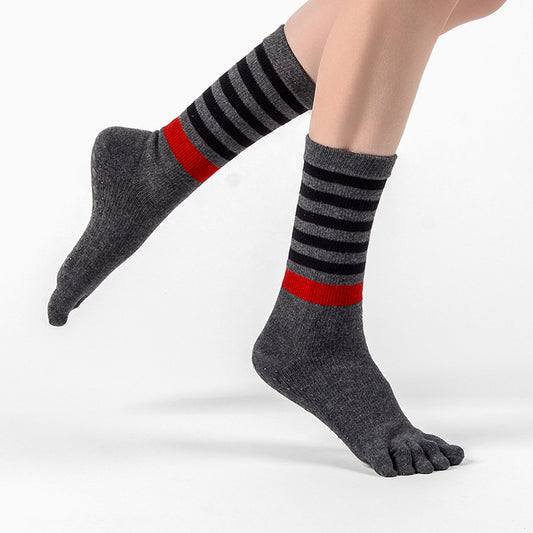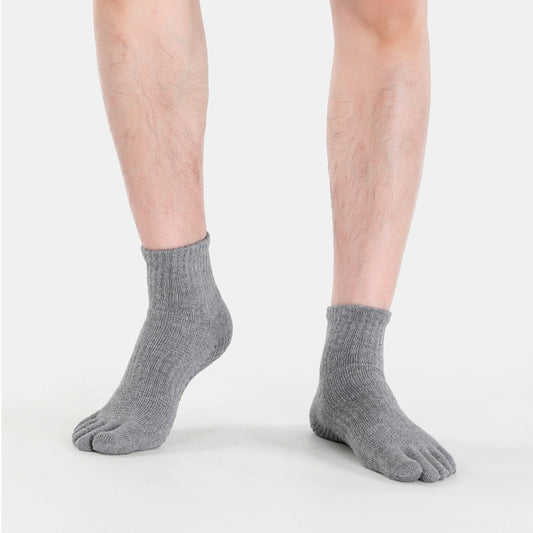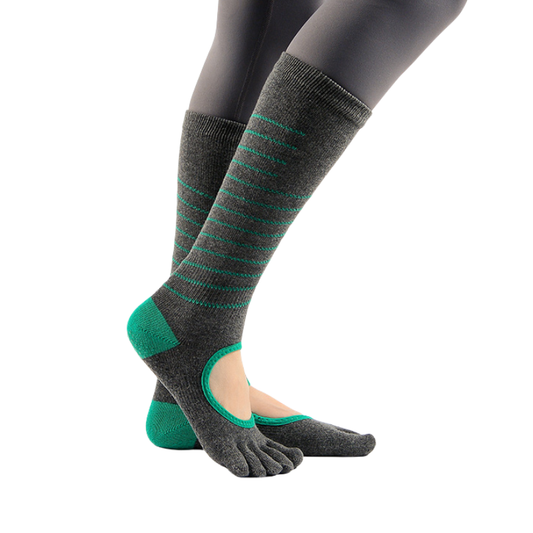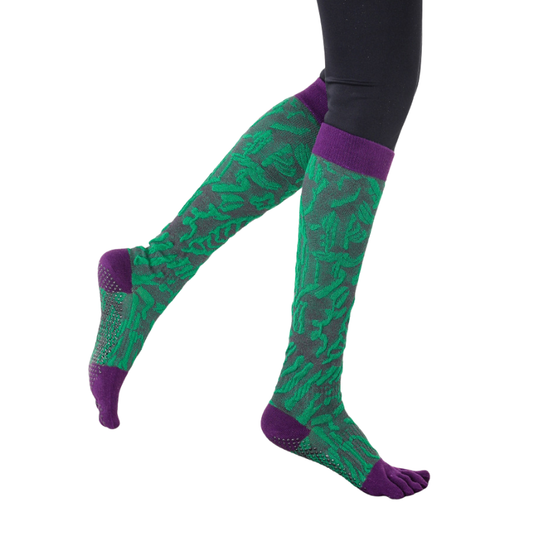Introduction
If you’ve ever felt your feet slip in Downward-Facing Dog or struggled to maintain balance in Warrior Pose, you know how small details can affect your yoga practice. That’s where 瑜伽袜 (yoga socks) come in. While often overlooked, these non-slip socks provide more than warmth—they enhance grip, balance, safety, and hygiene, making them an essential accessory for yogis of all levels.
What Are Yoga Socks?
Yoga Socks are specially designed socks with grip pads (often silicone dots or textured soles) that prevent slipping on mats or studio floors. They come in different styles:
-
Full-toe socks for maximum coverage and warmth
-
Open-toe socks for a barefoot feel while still providing grip
-
Five-toe socks that encourage natural toe splay and proprioception
According to YogaClub, grip socks are popular not just in yoga, but also in Pilates and barre, where stability and balance are crucial.
Enhanced Grip and Traction
Sweaty hands and feet are common in heated yoga sessions, leading to slips that break concentration and pose a safety risk. Grip-based Yoga Socks solve this by adding traction where you need it most.
A guide from The Sports Edit notes that socks with full-sole grips offer superior stability compared to partial coverage, making them ideal for high-intensity practices.
Improved Balance and Control
Balance is at the heart of yoga. By preventing slips,Yoga Socks allow practitioners to hold poses longer and transition more smoothly.
Some designs—like five-toe yoga socks—improve proprioception, the body’s awareness of its position in space. This enhances grounding and stability, especially in one-legged asanas such as Tree Pose or Half Moon Pose (Knee High Socks Blog).
Safety First: Preventing Injuries
While yoga is generally low impact, injuries from slips can occur—particularly in hot yoga or fast-paced Vinyasa classes. Non-slip Yoga Socks reduce these risks, giving practitioners confidence to attempt more advanced postures.
Research published in the Journal of Bodywork and Movement Therapies highlights how surface stability reduces musculoskeletal strain and improves alignment, both of which help prevent falls during dynamic movement.
Hygiene and Cleanliness
Yoga studios often reuse mats, and even well-cleaned surfaces may harbor bacteria or fungi. Yoga Socks act as a protective barrier, reducing the risk of infections like athlete’s foot.
As iCompressionSocks explains, grip socks not only shield you from shared studio mats but also from dust and dirt when practicing outdoors.
Comfort, Warmth, and Versatility
Beyond safety, Yoga Socks provide extra cushioning and warmth, especially in slower-paced restorative or Yin yoga classes held in cooler studios.
They’re also versatile: the same pair can be used for Pilates, barre, or at-home workouts, making them a cost-effective and multi-purpose investment.
Choosing the Right Yoga Socks
When shopping for Yoga Socks, consider:
-
Grip coverage: Full-sole grips provide better traction than partial pads (SELF).
-
Material: Breathable cotton blends keep feet dry; synthetic fibers improve durability.
-
Fit: Socks should hug the foot without being overly tight.
-
Style preference: Full-toe for warmth; open-toe for a barefoot feel.
Zokfit, for example, are exploring performance-engineered yoga socks with breathable materials and reinforced grips to meet both comfort and safety needs.
Common Concerns
-
Do they wear out fast?
Yes—grip dots lose traction over time, especially with daily use. Most experts recommend replacing them every 3–6 months. -
Are they worth the cost?
While slightly pricier than regular socks, their role in preventing injuries and improving hygiene makes them worthwhile for consistent practitioners.
Conclusion
Yoga Socks may seem like a small accessory, but they play a big role in supporting a safe, balanced, and focused practice. From enhancing grip and balance to improving hygiene and comfort, they’re a practical investment for beginners and seasoned yogis alike.
Next time you roll out your mat, consider adding a pair of grip-based Yoga Socks—you might find your flow steadier, your poses stronger, and your practice more mindful.







